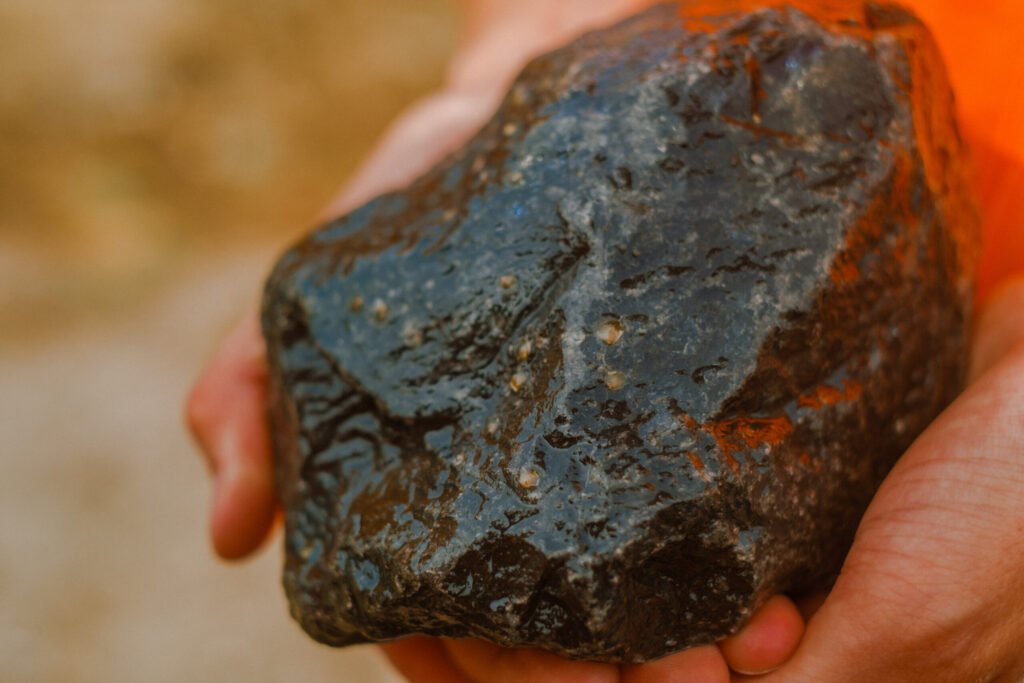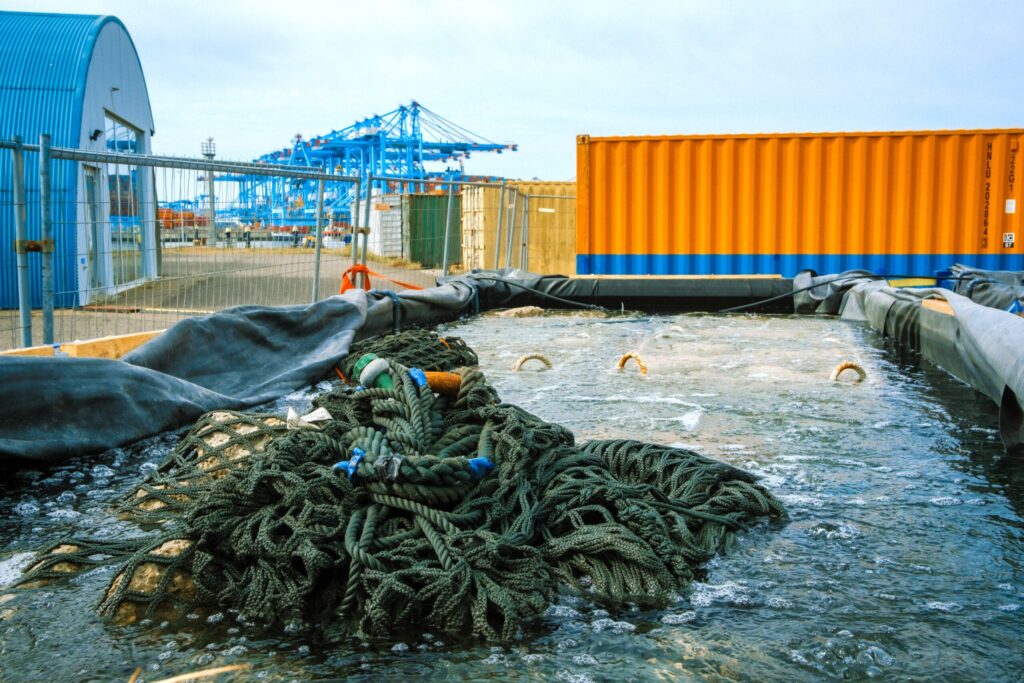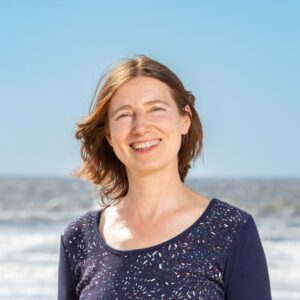In remote setting, millions of oyster larvae are raised in a specialised hatchery and then moved to a location near the sea, such as a harbour. There, they are placed in seawater tanks with stones. Within days, the larvae attach to the stones and grow into young oysters. The consortium is also investigating how reef sounds influence this process: do flat oysters use these sounds to find a suitable place to settle? If so, sound could be used to increase the likelihood of settlement.
Oyster-stones
After several weeks, the containers are loaded onto ships. The stones with young oysters are then placed in the water, where the oysters will establish their new habitat. If this modular and flexible approach proves successful, the process could be carried out cost-effectively anywhere and at any scale. By integrating oyster-stones directly into the design, construction and maintenance of wind farms, cables, breakwaters and platforms, this project combines maritime infrastructure with large-scale nature restoration. In the coming months, researchers will monitor how well the oysters survive and grow. Next year, the remote setting method will also be tested at a TenneT cable crossing in open sea.

New oyster reefs
The development of this new technique is closely linked to marine life in the North Sea, which is under pressure. Oysters form large reef structures as they grow together over time. These reefs create a solid base full of nooks and crannies, providing ideal shelter for a wide variety of marine plants and animals. In addition, oysters filter water, release nutrients and capture waste materials from the water column. This means they can give a powerful boost to life in the North Sea. Due to overfishing, pollution and disease, almost all reefs have disappeared. The remote setting method could make an important contribution to their recovery.
Oysters are the quiet builders of a healthy underwater world. Restoring them is not a luxury, but a necessity. The fact that we can bring reefs back in this innovative way gives real hope.
Unique collaboration
This project builds on the expertise of nine partners: Wageningen Marine Research, Wageningen University, ARK Rewilding Netherlands, Stichting Zeeschelp, Waardenburg Ecology, Van Oord’s initiative Ocean Health, TenneT, the Port of Rotterdam Authority, and De Rijke Noordzee. De Rijke Noordzee is a collaboration between Stichting De Noordzee and Natuur & Milieu. Over the next three years, this consortium of companies, research institutes and nature organisations will work together to further develop the remote setting method.

